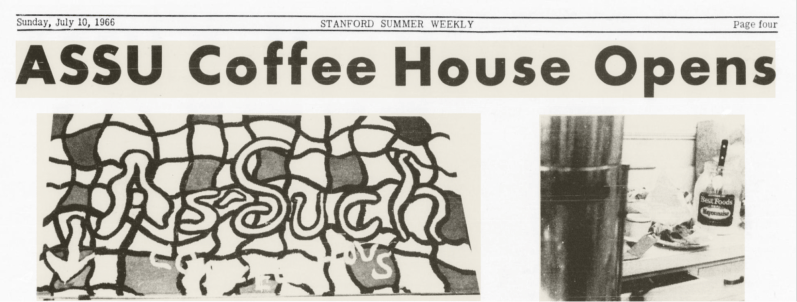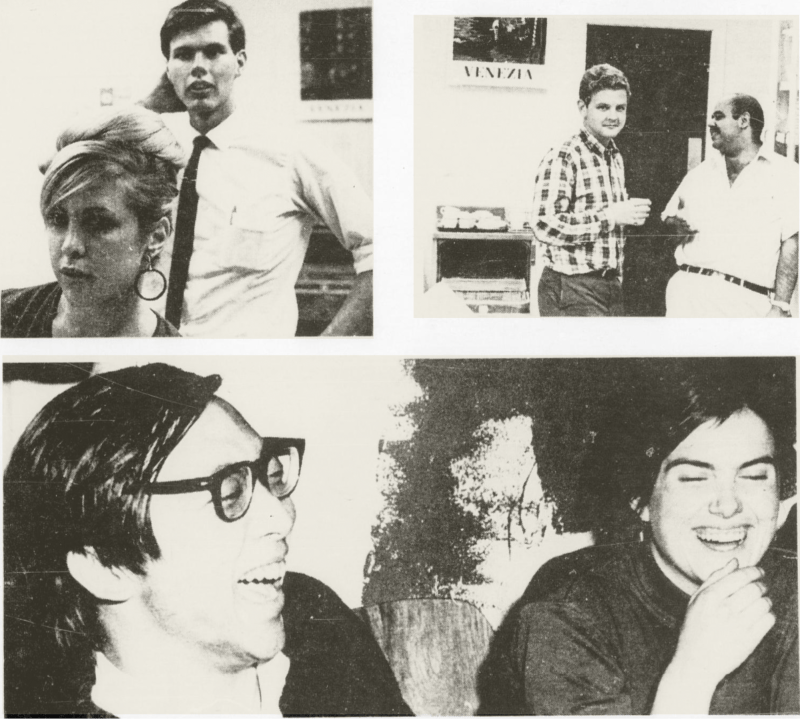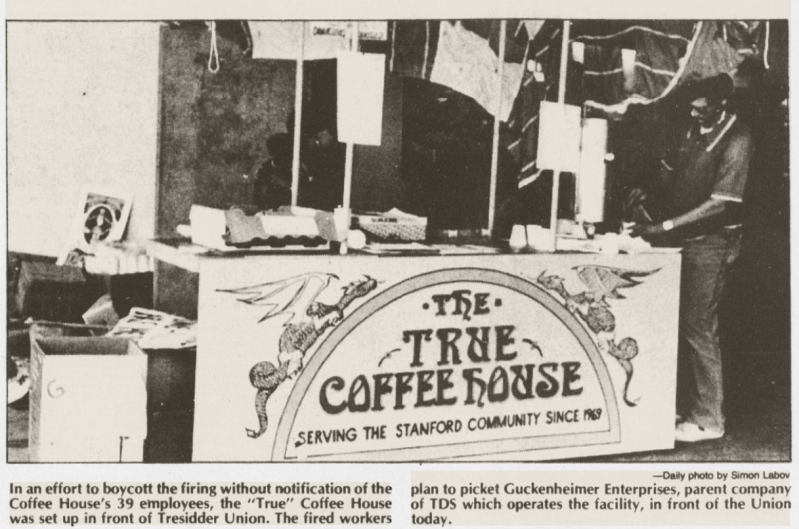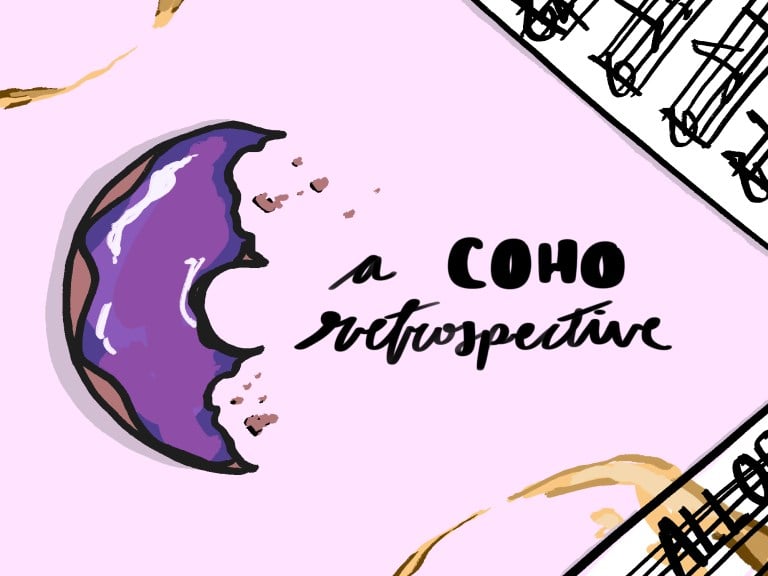A great espresso comes from coffee grounds, hot water and a pressure of about 9 bars, or 130 PSI (pounds per square inch). Just like the bitter bean of its métier, beloved student spot Coffee House (CoHo) became delicious under pressure. From the uphill battle of its inception to the uncertainty of recent pandemic years, the CoHo’s history is a rich one.
It comes as no surprise, then, that its contribution to the student body has been profound. During its 55 years of operation, the CoHo has occupied a vital niche in the fabric of campus social life as a casual space for studying, socializing and experiencing the arts. This article looks back at The Daily’s archives to track Coffee House’s evolution.
Early calls for coffee house
Discourse around Stanford’s social scene dates several decades. According to The Stanford Daily’s coverage of the Tresidder café’s 1968 grand opening, students demanded a coffee house, among other relaxed gathering spaces, starting during the 1960s. Students proposed this as a solution to the perceived lack of “cohesiveness in the student community,” according to another Daily article from 1966.
The ASSU had previously established its own informal coffee house, the ASSU Coffee House or AS-SUCH, in 1966. Stanford Daily writer Tim Haight ’66 Ph.D. ’78 wrote in his column that the AS-SUCH “existed this summer at the International Center, proving that there is no regulation against coffee houses.” Citing the overcrowding of Tresidder Union, he argued that such a space was much needed.
However, Associate Dean of Students Joel Smith soon shut down the project, fearing that the coffee house would attract drug users and unwelcome off-campus visitors.


Take two: The Stanford Community Coffee House
It was from the ashes of this short-lived endeavor that the CoHo — then known as the Stanford Community Coffee House — was born. Stanford Daily alumnus Michael Morton ’70 recalled being right in the thick of it, beginning with his acquaintance of freshman dormmate Ted Loring ’70. According to him, Loring was something of a driving force behind the establishment of the Coffee House.
“Ted was one of the people to whom it made a difference that Stanford didn’t have a coffee house,” Morton said. “[He thought,] ‘How does a major university not have its own coffee house? This is just impossible.’ So he determined to do something about it.”
To see this vision through, Loring joined the ASSU, eventually rising to the position of Union Board Chairman. This time, the coffee house proposal stuck. According to Morton, Loring was instrumental in energizing the complex logistical undertaking of the student-run coffee house project. He even called in his own connections to recruit the labor needed for the business — which was how Morton ended up staffing the Stanford Community Coffee House.
The café started off small in fall of 1968, running out of a fraction of the room it occupies in Tresidder today. Space was made in what was then a broader game area featuring billiards and pool. (There was even a bowling alley in the place Treehouse now occupies!) Morton remembered that the University brought in outside consultant Richard Elmore, who “had experience in managing restaurants and food service operations and setting them up initially,” to help start the café.
As the business grew in revenue, the café’s ownership was restructured. According to Morton, the Coffee House soon went from being entirely student run to being partially operated by outside business administrators. In 1973, Tresidder food services management was taken over by Toute de Suite, Inc. (TDS). That same year, student manager Ken Brubaker ’71 oversaw an ambitious $81,000 remodeling project. The Daily reported a co-occurring 15% price hike across the food court, which TDS president Skip McIntyre attributed to government fiscal policy driving up wholesale food costs.
More controversial, however, was the labor side of TDS management. Guckenheimer Enterprises, the parent company to TDS, earned itself a National Labor Relations Board (NLRB) complaint in 1979 when it “unlawfully terminated” the employment of 39 workers due to union activities. The fired employees (some of whom were Stanford students) responded by opening a food service stand called the “True Coffee House.” Other actions they undertook included a picket line and boycott.

A Daily editorial sided with the protesters, calling on the University to take over the contract. Indeed, the students triumphed, albeit temporarily. The ASSU ran Coffee House as an independent contractor called Coffee House, Inc. (CHI) until 1985, when Tresidder officials decided to transfer the contract to a national food service chain called Saga. They claimed that students had “ineffectively managed” the business. Boycotts started once again.
Daniel Rosen ’86 Ph.D. ’93, who helped run CHI and lead the boycott, posited that the company had fundamentally different priorities. “We never wanted to lose money on the Coffee House, but we weren’t in it for a profit. We were out to serve the students as the students wanted to be served,” Rosen told The Daily in 1985.
With officials and students disagreeing over the café’s business model, profitability seemed to be the deciding factor at the center of this handoff — a theme that would resurface decades later.
The CoHo we know and love
Fast-forward to 2007: the iPhone has just been rolled out, Britney Spears shaved her head and the CoHo is shutting down. Over the years, students had shortened its name in classic Stanford fashion. Unable to compete with the commercial success of the shiny new Axe & Palm (TAP) eatery, though, the CoHo got the ax.
The Daily’s editorial board lamented this decision in another op-ed, stressing that the heart of the establishment was its important social contribution to campus and not the food.
“Perhaps most importantly, the CoHo was one of the few places on campus that felt as though it could have existed outside of Stanford land, easily found on any street corner in any city,” they wrote.
Over 830 students, alumni and staff members came to the same conclusion in January of 2008 when they signed a petition to bring back the coffee house. In addition to vocal appreciation for the menu options themselves, signatories made it known that the CoHo was an important space for the performing arts.
In the end, it seems they got their wish; food and live performance are the drivers of the current CoHo owner’s vision. Ray Klein, who also owns Treehouse and Ray’s Grill, took over CoHo and has been growing it ever since. His daughter, Jenny Mountjoy M.A. ’92, described this transition as a return to the more funky, lively space she knew in her time as a Master’s student.
The CoHo had veered in a more corporate direction in the years before its 2007 closure, she said. Now, the family’s concept for it focuses on working with students and staff to facilitate social events and bring quality foods. Notably, CoHo manager Nelly Mondragon brings her love of baking into the space, debuting new creations like the newest matcha-flavored cookie.
Among the café’s most well-known social events are the Monday jazz nights. Current Ph.D. student Aris Kare ’18 M.A. ’20, who has been running CoHo jams for nearly 10 years, emphasized the long-standing legacy of music in the venue. As a musician, he said, he appreciates CoHo as a “direct interface with students and the arts” and “a little safe haven away from the busy bustle of campus life.”
The Coffee House’s role in facilitating and structuring Stanford social life is undeniable. From labor rights issues to student grievances on campus life, many threads of its history also persist in contemporary University discourse. The next time you propose a CoHo rendezvous to a friend or swing by for a treat after waiting in the Package Center line, perhaps you will ask yourself — once this present moment has become part of an archived history, which elements of it will endure?
